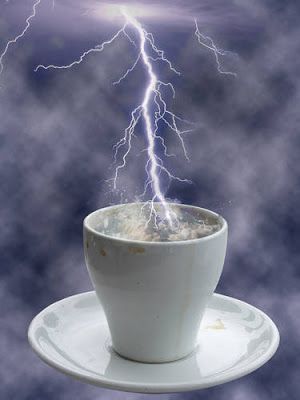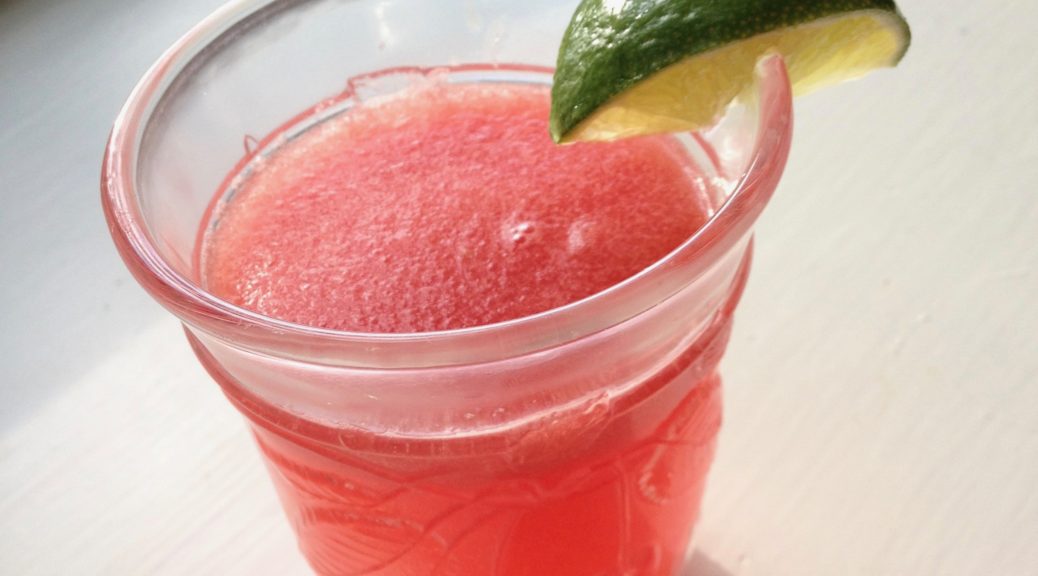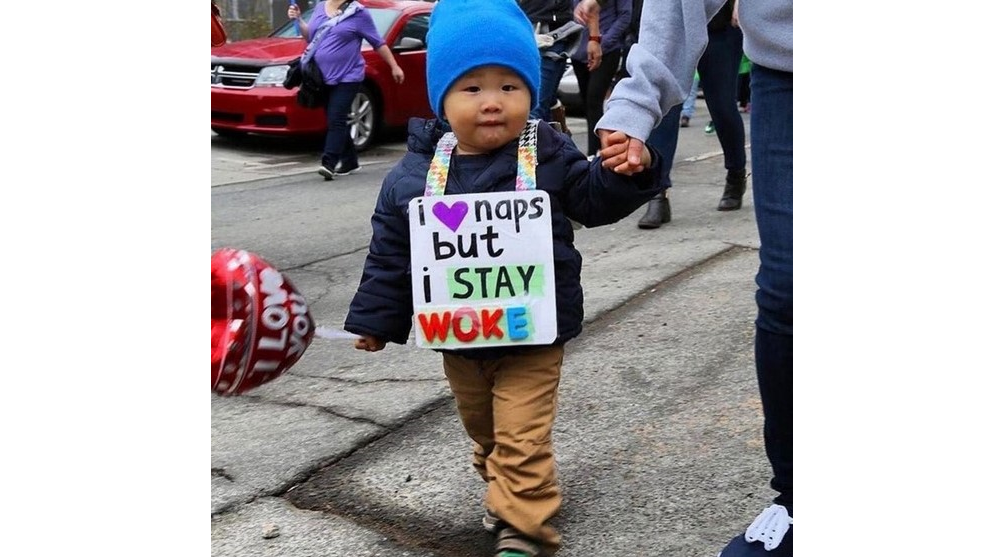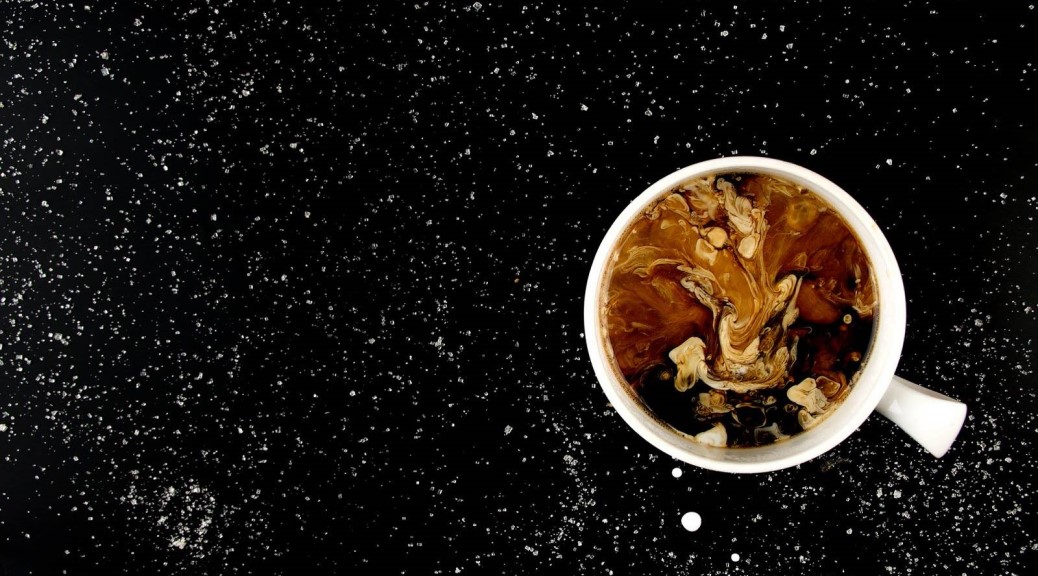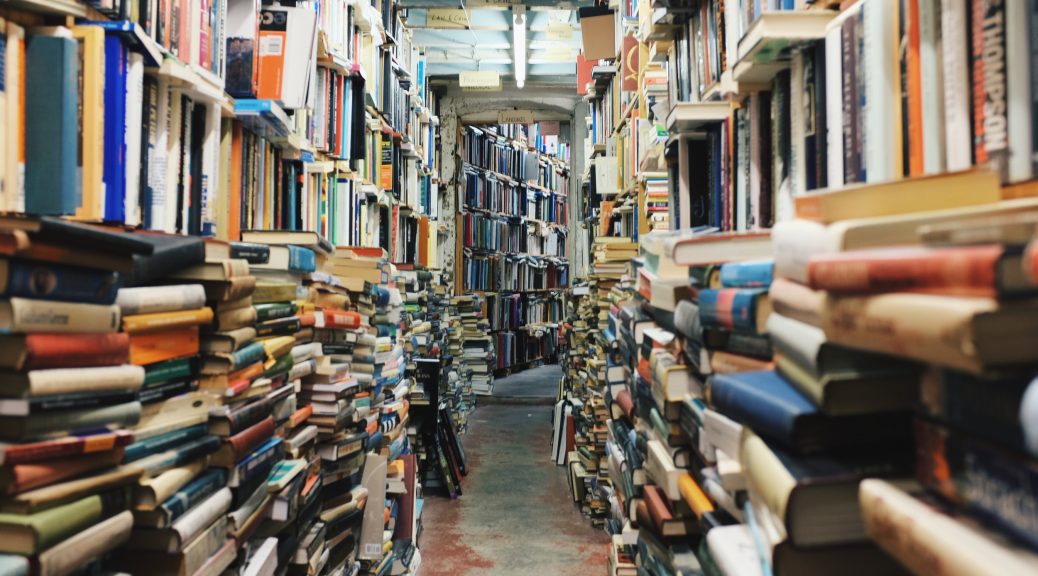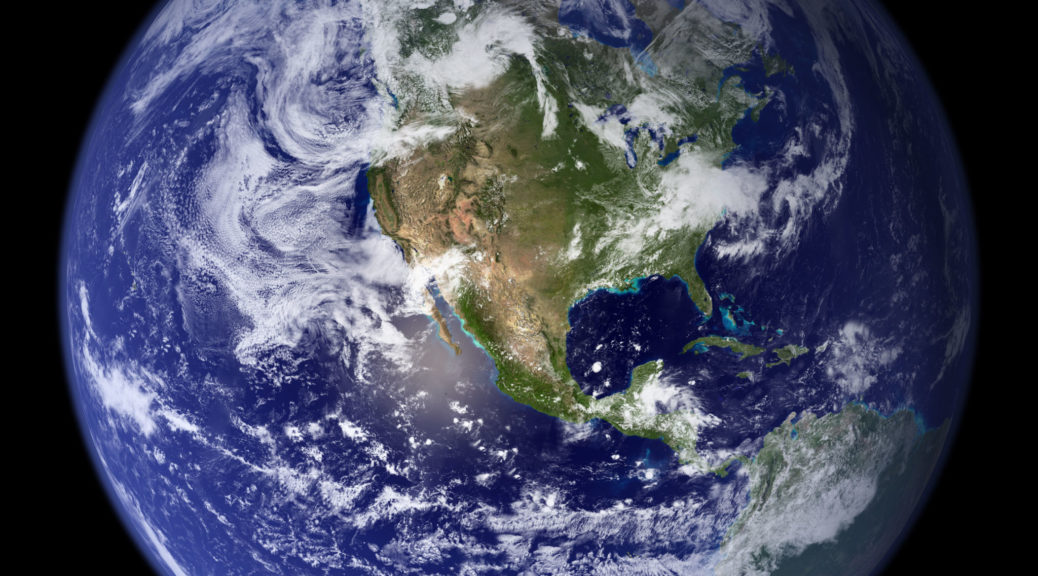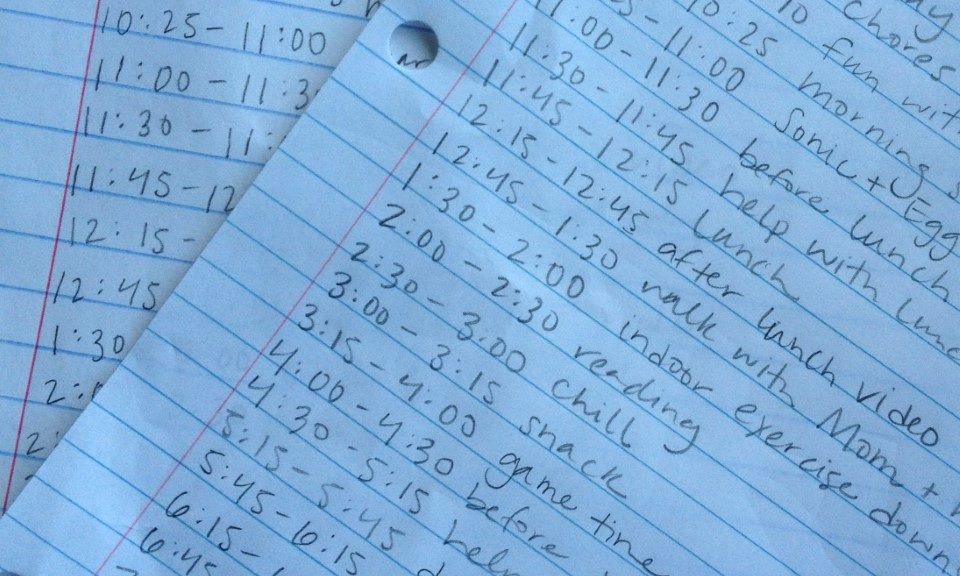Anyone else get woken up by an early morning thunderstorm?
All posts by Pepper
Pepper’s Summer Watermelon Cocktail
I've always been happy to leave the cocktail mixing to the pros, but while sheltering in place, I've been playing around. My younger son is really into watermelon these days, which made me wonder how watermelon might work in a cocktail. I came across this recipe, and after a little experimentation, I might just have found my favorite summer cocktail. It's not to sweet and has a spicy kick that I can't get enough of. Plus, the watermelon "ice cubes" are genius.
Planning note: you'll need to prepare the infused vodka, simple syrup, and watermelon ice cubes ahead of time. This might seem like more work than you want to do for an easy summer cocktail, but it's really not all that much. If you're making cocktails at home, you likely already have a jar of simple syrup in the fridge. And I've found that the extra watermelon juice is a great addition to fruit smoothies, which I've been making regularly for the boys.
INGREDIENTS
- 2 oz. jalapeno-infused vodka
- 1 small, seedless watermelon (or a package of cubed watermelon), from which you'll make juice and ice cubes
- 1 lime, juiced to yield 1 tablespoon juice
- 1 tablespoon simple syrup
- splash of sparkling water or club soda
- lime wedge for garnish (if desired)
DIRECTIONS
To make the jalapeno-infused vodka:
Measure your desired amount of vodka into a mason jar. (I've done this with 4 ounces and 8 ounces.) Slice 1 jalapeno pepper into rounds and add to mason jar. Put the lid on and let infuse for 30 minutes. (This gets quite spicy quickly, so you do NOT want to forget about it and let it sit for hours!) Strain out pepper and seeds and return vodka to mason jar. Store at room temperature until ready to use.
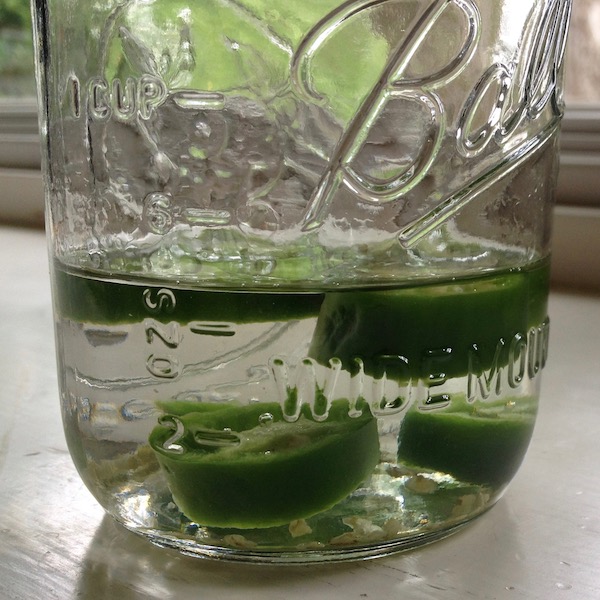
To make the cocktail:
Cut watermelon into cubes approx. 1.5 inches square. For each drink you plan to make, throw four cubes into a ziploc bag and freeze for 2 hours (or longer). These will be your ice cubes. Take about a cup of watermelon cubes and liquefy, using an immersion blender, full-size blender, or food processor. Note: I strained the juice the first time I made it, but I found that by not straining it, I get more watermelon flavor in the drink, which I prefer.
Measure 1/4 cup (2 oz.) watermelon juice, 1 tablespoon fresh lime juice, 1 tablespoon simple syrup, and 2 oz. jalapeno-infused vodka. If you have a cocktail shaker, shake it all up and strain into a glass over your watermelon ice cubes. If you're shaker-less like me, stir vigorously and then pour into a glass over your watermelon ice cubes. Add a splash of sparkling water (I probably use about 1 oz.). Garnish with a lime if desired. And enjoy!
Talking to Kids about Race (Especially for White Parents)
With all that's been going on lately, how are the Citizens with young kids handling it? I want to share some thoughts, tips, and resources, in case they're helpful. And if you don't have young kids but know someone who does, please feel free to share this with them.
First off--do you really have to talk about race with kids? Can't you just tell them that everyone is equal and let them figure it out from there? Nope! The world is not colorblind, and neither are your kids. A while back, I read the book NurtureShock, which has a great chapter called “Why White Parents Don’t Talk about Race.” You can check out an excerpt here. The key takeaway is that even very young kids see skin color differences and that not talking about race results in kids jumping to conclusions that are probably not what you wanted them to have.
And think about it. Once kids hit a certain age, they're going to hear things at school, from kids on their baseball team or in their gymnastics class or from someone at in their scout troop. So wouldn't you rather have given them a certain level of knowledge and understanding for when things come up in situations you're not a part of?
Telling a kid that a cop killed a Black man in your community is wrenching. When we told the jalapeno, who is nearing ten years old, about George Floyd's murder (omitting graphic details), he asked "But why?" in this voice that broke my heart. I was glad that at least we've been talking about race and racism for a long time already with him. When you have already been talking about race with your kid, in a moment of crisis you're not starting from zero.
So where do you start? I probably have a bias toward books, but I also think they're a great way to have a conversation about something without making it about your kid or their friend or anything that feels more personal.
Here's a great list of picture books you can use to start these conversations: 31 Children’s Books to Support Conversations on Race, Racism, and Resistance.
For the youngest kids, you can preorder Antiracist Baby by Ibram X. Kendi, which comes out on June 16. And here's a list with more great board books for babies and toddlers.
For a resource specifically about police violence toward Black men, there's a good book called Something Happened in Our Town that's also been made into a 9-minute video you can share. I like that it includes both a white family and a black family in the storyline. Consider watching it with your kids as a way to launch a conversation. If you get the book, there is a lot of information for parents and educators about how to talk more with kids.
Earlier this morning, I read an article in the Washington Post specifically about the need for white parents to talk about race with their kids. There were three key points I found helpful.
1. Include books, TV shows, movies, music, etc., by nonwhite people as a regular thing for your family. And expand your circles to include people of different ethnicities. The article didn't mention this, but supporting minority-owned restaurants and other business would be another great thing to do.
Our actions speak at least as loudly as our words, and kids pick up A LOT just by seeing what we do. Remember that if you're only reading books about Black people when talking about slavery and civil rights, you're not sharing a complete picture of Black life.
To find good, diverse book for kids that aren't specifically about racism or oppression, a great tool is the Our Story app from We Need Diverse Books.
2. Educate yourself and your kids accurately about history. The article doesn't mention this, but I think doing so also gives you the background so that you can speak up as needed in conversations with your kids' teachers to advocate for a more accurate, more inclusive curriculum.
There are lots of lists circulating right now for what adults can do--here's one with a lot of good resources. And here is a graphic with some great books--the caption includes suggestions on what to start with if you're feeling overwhelmed.
One key book I read last year was An Indigenous Peoples' History of the United States for Young People, which has helped me have better conversation with my kids about our country's history, since my own education in school was profoundly lacking when it comes to Indigenous history.
3. Talk often about current events and things you're seeing on social media. We white people are so often uncomfortable talking about race because we didn't grow up doing it. But by making it a regular part of conversation, you and your kids will start becoming more comfortable having these conversations at home--and out in the world.
Keep in mind that you're not going to have one conversation about race with your kids. Like everything important in parenting, it's something that will come up repeatedly. And your conversations will expand and deepen. And kids will ask questions sometimes when you're not ready for them. But remember that your kids don't need you to have all the right answers. They just need your willingness to talk.
Finally, if you've made a donation in recent days, talk to your kids about the place you're donating to and why. When I was a kid, I had no idea my parents donated anywhere, and while I get the instinct to not call attention to it, I didn't really understand that donating was important because we weren't talking about it.
So I hope this is all helpful, and I wish all the parents out there lots of strength and support today and every day!
Moon Day
Anyone got any special projects underway this weekend? Yesterday I infused vodka with jalapenos (tasty!) and started a jar of lilac sugar.
May 13, 2020: Summer Plans
Are you making summer plans? Canceling them? Putting your fingers in your ears and not even thinking about anything beyond making it through the next few days?
Worth-the-Extra-Effort Baked French Toast
Confession: I'm not great at making French toast on the stovetop. I don't know if it's that I'm not using the right bread, not using the right recipe, or don't have the right temperature for the griddle. But that's okay because I much prefer baked French toast anyway. You put in all the effort the night before, and then in the morning you just have to stumble out of bed, preheat the oven, and make yourself some kind of caffeinated beverage while the oven does the rest.
A while back I shared an easy baked French toast recipe. This is the one to break out when you are feeling extravagant. It makes a whole lot, which is great because the leftovers are also delicious. If you want to go all out, this spinach and potato breakfast hash is great alongside it.
INGREDIENTS
French Toast
1-2 tablespoons butter to grease pan
1 loaf crusty bread
8 large eggs
2 cups (16 oz) whole milk
1/2 cup (4 oz) heavy cream
1/2 cup (3.5 oz) granulated sugar
1/2 cup (4 oz) light brown sugar
2 tablespoons vanilla extract (yes, tablespoons is correct!)
Topping
1/2 cup (2 oz) flour
1/2 cup (4 oz) light brown sugar
1 teaspoon cinnamon
1/4 teaspoon salt
approx. 1/4 teaspoon freshly grated nutmeg
1 stick (4 oz.) butter, cut into pieces
TO PREPARE THE NIGHT BEFORE
Grease a 9 x 13 baking pan with butter. Cut the bread into cubes (1" square or smaller) and place in the pan. Crack the eggs into a large bowl. Add milk, cream, granulated sugar, brown sugar, and vanilla and whisk everything together. Then pour it all over the bread. Cover the pan tightly (I use plastic wrap) and store in the fridge overnight.
Make the topping: Mix the flour, brown sugar, cinnamon, salt, and nutmeg in a separate bowl Add the butter and use a pastry cutter to mix it all together until the mixture resembles fine pebbles. (Be careful at this stage; I once flung a large piece of butter out of the bowl and onto the kitchen floor while doing this.) Transfer mixture to a Ziploc bag and store in the fridge.
TO BAKE
Preheat the oven to 350 degrees F. Take the pan out of the fridge and sprinkle topping on evenly. Bake for 45-60 minutes. The shorter time gives you something that is very bread putting-esque in the middle, while the longer time gives a firmer, less squidgy texture.
Scoop individual servings onto plates and drizzle with syrup. (A little syrup goes a long way here.) I like to serve with some vegetarian sausage and fresh fruit.
Recipe source: The Pioneer Woman
On Reading (or Not) and Book Awards
Once upon a time, I read books. Mostly, I read books during my bus commute. And when I had to stop commuting, I stopped reading. Sure I read for work and I read for my kids. But I haven't yet managed to find a time in the routine for reading whatever the heck I want.
However, one bit of good news for book lovers is that a pandemic isn't enough to stop book awards from being bestowed. I talked about the Minnesota Book awards here in 2014 and 2017, so now that another three years have passed, the time has come to once again bring up our fabulous literary community. There was, of course, no in-person gathering, but I was watching the livecast as it happened, and thanks to the accompanying chat, the event was surprisingly celebratory and truly did have a feeling of community and mutual support as authors cheered one another on. I even have it on good authority that the brother of a certain WGOM citizen was even in (virtual) attendance. (I kind of loved that cocktail attire was still recommended despite the fact that we were all in our homes.)
You can check out the livecast here if you'd like. And the full list of winners is here.
And, well, there's just one other little thing. I have a rather special connection with one of this year's winning books. And seeing it win may have been a little bit exciting. This particular book meant a lot to all of us involved with it. If you're curious, you can check out the story behind the book.
So what are you reading? Or wishing you had time to read?
Earth Day
Sure, we can make every day Earth Day, but today is also literally Earth Day. And what better way to celebrate than with a global pandemic? Well, okay, maybe celebrate is the wrong word.
Certainly gatherings and in-person events aren't happening, but if you're interested, you can find a lot going on today at earthday.org.
The pandemic has definitely forced lots of changes, at least some of which are good for the Earth. For me, one of the big things is definitely lack of travel--by car, bus, plane, or any other means besides my own feet. And oh, I did finally make the switch to cloth napkins at home, which I mentioned in an earlier post in this series! It turned out my mom had a set of cloth napkins she wasn't using, and how that we're eating 100% of our meals at home, it's been nice to be able to know we're not generating a bunch of trash just keeping our faces food free.
Have you made changes--or had changes forced upon you--during this time?
Pandemic Parenting
The nice thing about having agreed to write this post is that I have something to do this weekend that doesn’t involve repeatedly checking Twitter and Instagram, trying to send messages to friends but not being able to figure out the phrasing and finally giving up, and staying up too late thinking I’ll get something done but accomplishing nothing.
My kids were on spring break last week and I had four days off, but Friday was rough. To get us through the weekend, I had my kids make schedules (pictured above), which definitely helped in terms of avoiding boredom as well as giving them a sense of control in a situation that’s beyond their control.
If you're looking at the photo of the schedules and thinking they're absurdly detailed, yes, it's true. They're ending up being more of a guide to a sequence of events than something we're following exactly. A long time ago, I remember reading something about the value of following the usual routine during times of crisis. For a kid (especially young kids), the routine provides comfort and helps them know what to expect. So having a set wake-up time and bedtime, having some limits on screen time, having regular mealtimes, getting dressed every day, etc., all have meaning right now.
For those people here who have kids, I imagine the specific things you’re dealing with are different depending on the age of the kid, but it’s all stressful. And for those who don’t have kids, I know many of you still have your own parents to worry about right now.
Highlights of the past couple days include the jalapeño learning to chop vegetables with a chef’s knife and the peperoncino grating his own cheese for a quesadilla. The boys have also done a good number of household chores, and the jalapeño’s room is the cleanest it’s been all year. The jalapeño has also been having FaceTime chats with a 4th grade friend, and they've been both hilarious and adorable. Yet there were also some intense sibling fights and meltdowns.
In some ways, having elementary-age kids is great because it limits how much time I can spend reading about the pandemic. Taking care of my boys’ immediate needs gives me something to focus on and keeps my anxiety levels down. On the other hand, I dearly miss having any sort of time to myself (the boys did very little without a parent all weekend), and I envy the people who seem to be actually accomplishing stuff while staying home. On the other other hand (I have a lot of hands), I recognize how fortunate I am to not be dealing with far more serious problems.
During this next week, teachers in our school district will be working on plans for teaching remotely; we will be going to the school to get a Chromebook for each boy at an assigned pick-up time. Since Mr. NaCl and I will both be working from home (and need to be able to actually get work done), my parents are going to come help. They’re both 70 and in good health, so on the one hand I think they’re happy to stay busy and pitch in. But part of me can’t help wonder if I’m being selfish and irresponsible by accepting their help.
Over the weekend, I did do a very little bit of reading about how to talk to kids about coronavirus, and one of the key takeaways is that it's wise to filter the information they get. It depends, of course, on age of the kid and how sensitive they are, but limiting their access to TV news/press conferences and online sources of info might be wise. I've also told the jalapeño that there are things he might want to talk about that shouldn't be discussed in front of his 6-year-old brother.
By chance, I came across some wise words from a school psychologist. This psychologist said not to be surprised by an increase in behavior issues, including meltdowns, tantrums, and oppositional behavior. This is a normal reaction under the circumstances. (I was very reassured to read this.) They also said not to obsess over kids' progress in school during this time of remote learning or to put too much pressure on kids academically. As parents, our first priority is to do what we can to ensure that our kids feel comforted and loved right now. To quote the psychologist, "How [your kids] felt during this time will stay with them long after the memory of what they did during these weeks is . . . gone."
So how are you feeling?
The Footprints of the Windigo
As I mentioned last week, I've been reading Braiding Sweetgrass by Robin Wall Kimmerer. A passage caught my attention as I was riding the bus to work this morning, and I thought it might be an interesting way to approach this month's conversation.
Kimmerer talks about stories about the Windigo--a legendary monster with a heart made of ice that's insatiably hungry and is a cannibal that becomes more ravenous the more it eats. Say says, "It shrieks with its craving, its mind a torture of unmet want. Consumed by consumption, it lays waste to humankind." She doesn't bring this up, but I want to point out that while there are a number of stories about the Windigo in popular culture, they don't stay true to the stories the Anishinaabe people tell. (For more on that, check this out.)
Kimmerer says the following in reference to the footprints of the Windigo:
They're everywhere you look. They stomp in the industrial sludge of Onondaga Lake. And over a savagely clear-cut slope in the Oregon Coast Range where the early is slumping into the river. You can see them where coal mines rip off mountaintops in West Virginia and in oil-slick footprints on the beaches of the Gulf of Mexico. A square mile of industrial soybeans. A diamond mine in Rwanda. A closet stuffed with clothes that forces to read this article. Windigo footprints all, they are the tracks of insatiable consumption. So many have been bitten. You can see them walking the malls, eying your farm for a housing development, running for Congress.
We are all complicit. We've allowed the 'market' to define what we value so that the redefined common good seems to depend on profligate lifestyles that enrich the sellers while impoverishing the soul and the earth.
I'd love thought on this passage as well as thoughts on how you think about consumption in your own life.

